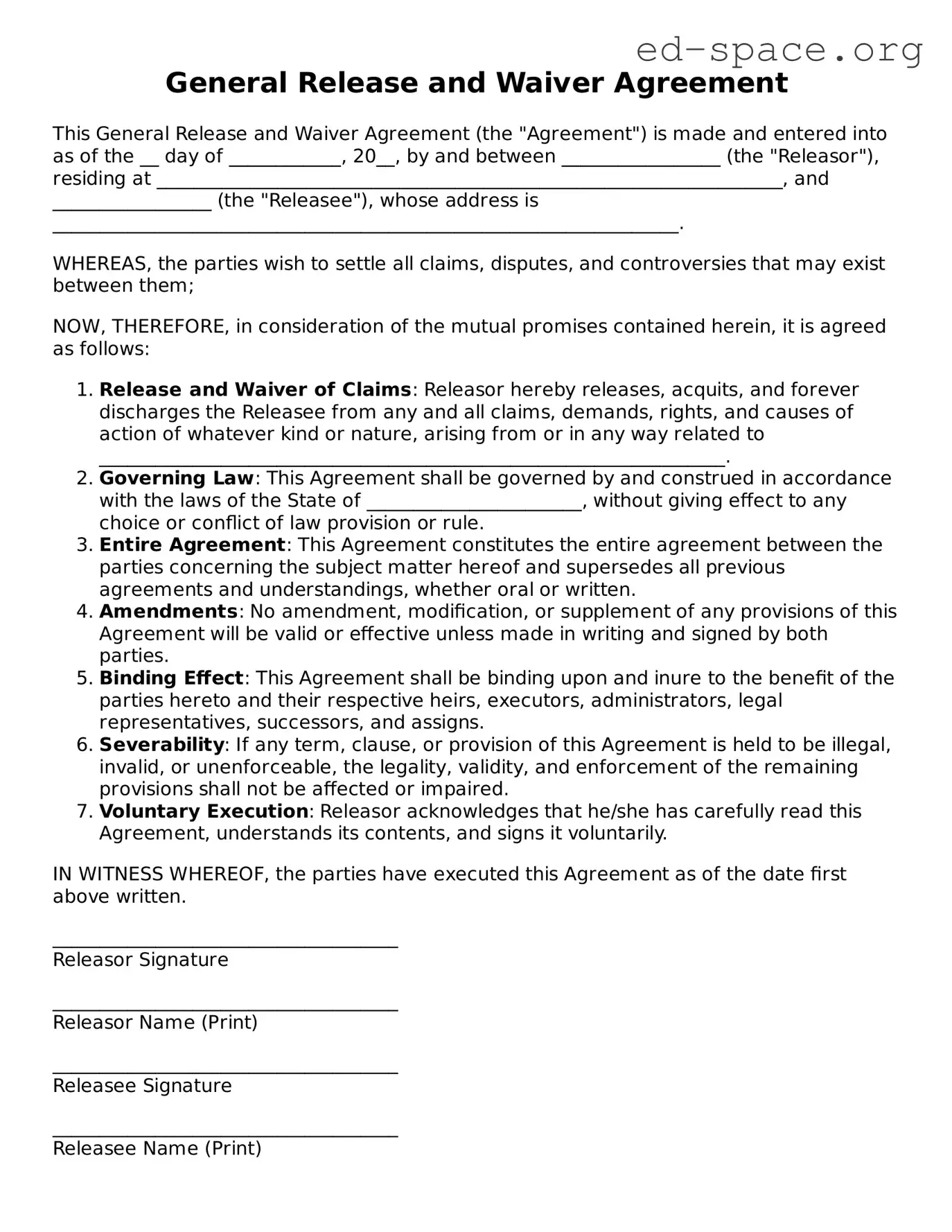What is a General Release and Waiver form?
A General Release and Waiver form is a legal document that one party signs to waive their right to make any future claims against another party. It is often used in situations where parties are resolving a dispute or when one party is participating in an activity that involves risk, agreeing not to hold the other party liable for any injuries or damages that could occur.
When should I use a General Release and Waiver form?
You should use this form when you are settling a dispute and want to prevent any future claims related to the dispute. It's also necessary when you are organizing an event or activity that involves some level of risk, and you want participants to waive their rights to sue if they get injured.
Is a General Release and Waiver form legally binding?
Yes, when correctly executed, a General Release and Waiver form is legally binding. It requires the party signing the waiver to understand fully and voluntarily give up their rights to seek legal remedies. However, the enforceability can vary based on the jurisdiction and specific circumstances around the signing.
What kind of information is included in a General Release and Waiver form?
The form typically includes the identities of the releasor (the person agreeing to waive their rights) and the releasee (the party being released from liability), a description of the dispute or activity, and the specific rights being waived. It should also outline any compensation provided to the releasor, and it often includes a statement that the releasor has read and understood the agreement.
Can I change my mind after signing a General Release and Waiver form?
Generally, once you have signed a General Release and Waiver form, you cannot change your mind and decide to pursue legal action for the matter covered by the waiver. This fact underscores the importance of understanding all the terms before signing. In rare cases, if the waiver was signed under duress or with significant misinformation, it might be challenged in court.
Do I need a lawyer to create or sign a General Release and Waiver form?
While it's not mandatory to have a lawyer to create or sign a General Release and Waiver form, consulting with one can be very beneficial. A lawyer can ensure that the agreement is legally binding, fair, and that you fully understand the terms and any implications of signing the form.
How long is the General Release and Waiver form effective?
The duration of effectiveness for a General Release and Waiver form can vary. It's often permanent for the matters it covers, meaning that you can't bring a lawsuit in the future for any claim related to the event or dispute. The specific terms of the agreement, however, can set a different duration, so it's crucial to read and understand the entire document.
Can minors sign a General Release and Waiver form?
Minors can sign a General Release and Waiver form, but it is generally not considered legally binding unless a parent or guardian also signs. The laws governing the ability of minors to enter into contracts, including waivers, can vary significantly by jurisdiction, so it's essential to check the local laws or consult with a legal advisor.
